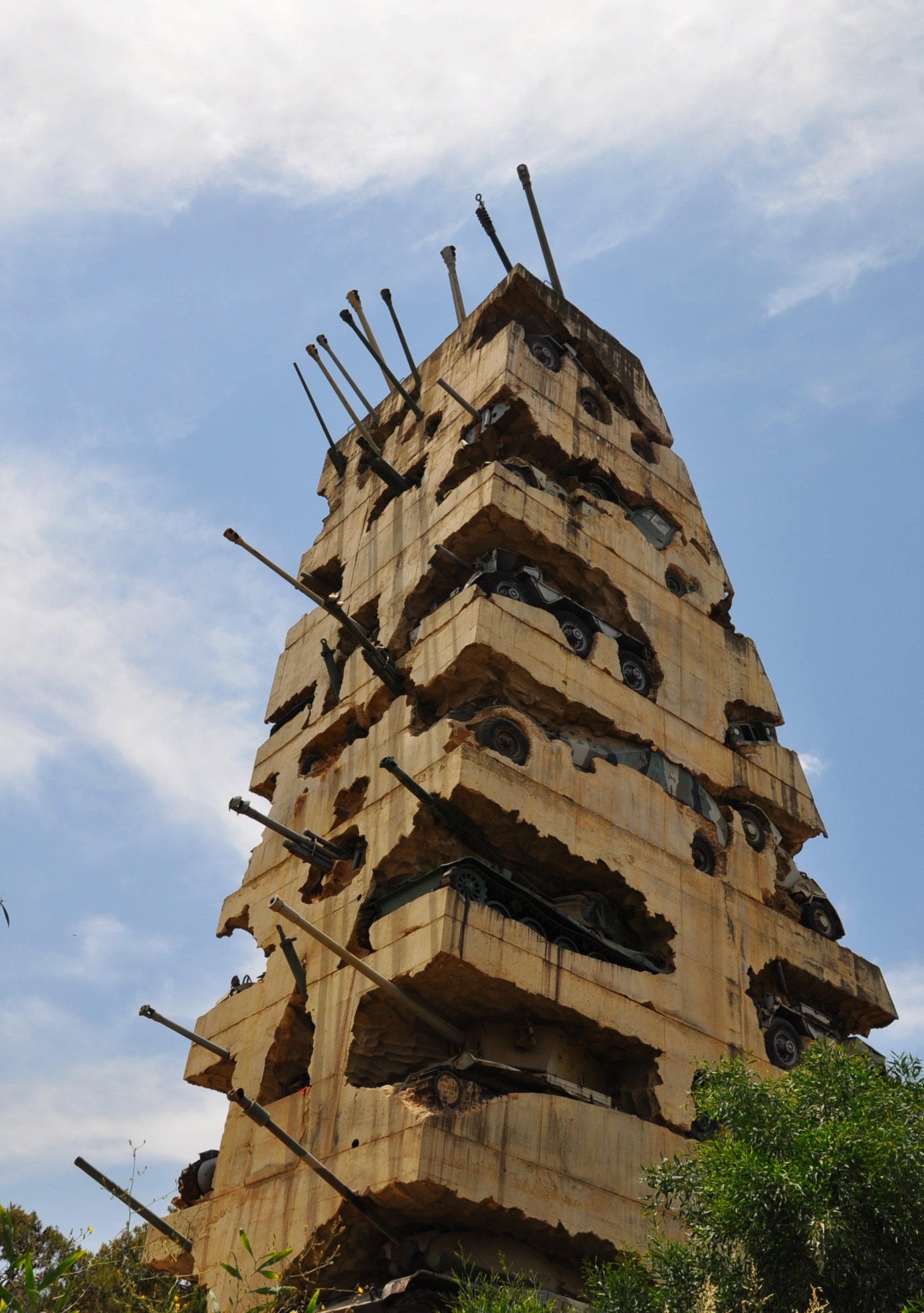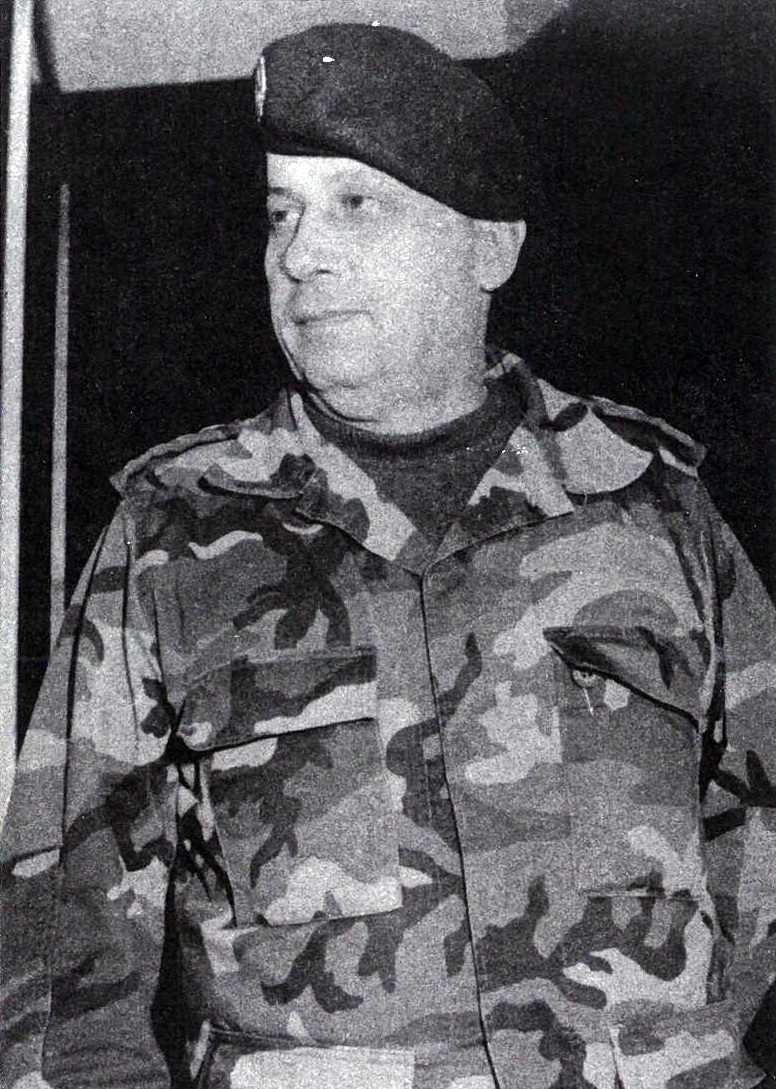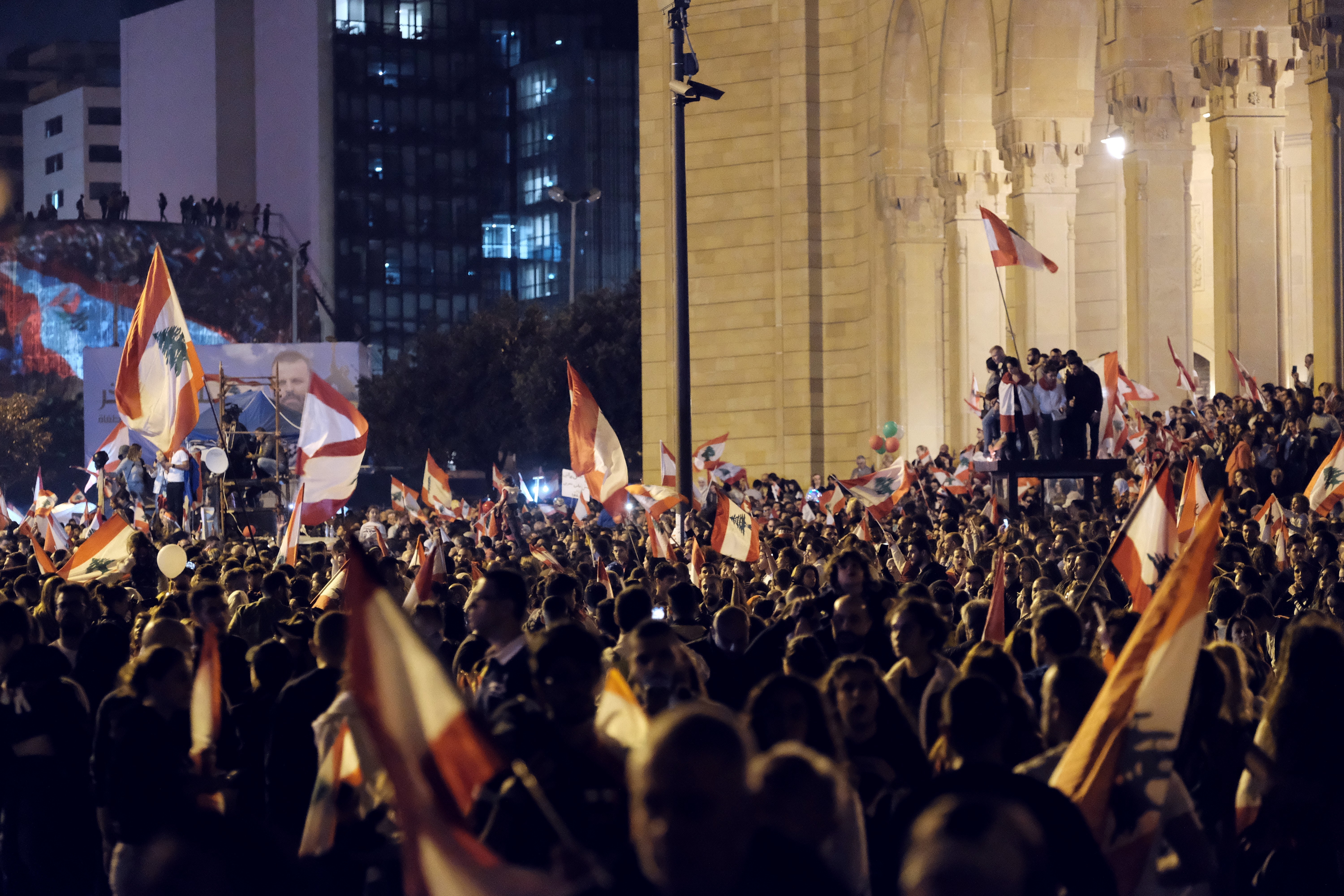|
Yarze
Yarze ( ar, يرزة) is a village in Baabda District southeast of Beirut in Lebanon. The headquarters of the Lebanese Ministry of Defense is located in Yarze. This facility includes the Lebanese Military Museum. In October 1990, following General Michel Aoun’s defeat in his ill-fated War of Liberation (1989–1990), the Syrian army took over the Ministry of Defence building in Yarze and removed all the ''Deuxiceme Bureau'' (Military Intelligence) files. The city also has the famous Hope for Peace Monument designed and gifted to Lebanon in 1995 by Arman Arman (November 17, 1928 – October 22, 2005) was a French-born American artist. Born Armand Fernandez in Nice, France, Arman was a painter who moved from using objects for the ink or paint traces they leave (''cachets'', ''allures d'objet'') to ... which was specially commissioned by the Lebanese government to commemorate 50 years of their military's service. References {{Baabda District Populated places in Baabda Distr ... [...More Info...] [...Related Items...] OR: [Wikipedia] [Google] [Baidu] |
Lebanese Military Museum
The Lebanese Military Museum (Arabic: المتحف العسكري ''Al Mathaf al-askari'') is part of the Lebanese Armed Forces and dedicated for the preservation of old Lebanese military antiques. The museum is currently located at the Ministry of National Defense, in Yarze. History The idea of establishing a military museum dedicated to the Lebanese Army emerged during the post-independence period, after the Lebanese authorities had supported the Lebanese military units, who were formerly enlisted in the French Army. Following the evacuation of foreign troops stationed in Lebanon (August 1, 1945), the Army Command ordered, in 1974, the establishment of a committee responsible for documenting the history of the Lebanese army and the preservation of its heritage. Since 1948, the Army Command began the collection and storage of old equipment, weapons and military uniforms. A year later, contacts between the Army Command and the directorate of antiques (of the Ministry of Education ... [...More Info...] [...Related Items...] OR: [Wikipedia] [Google] [Baidu] |
Lebanese Ministry Of Defense ...
The Ministry of National Defense ( ar, وزارة الدفاع الوطني ''Wizārat al-Difāʾ al-Waṭanī'') is Lebanon's service section for the Lebanese Armed Forces. The Ministry is located in Yarzeh, Baabda District, Mount Lebanon. The building which is considered the biggest Ministry building in Lebanon was designed by the French architect André Wogenscky in 1968. The ministry building also houses the Lebanese Military Museum. Ministers The ministers of National Defence have been: References External links *http://www.lebarmy.gov.lbList of Ministers(in Arabic) {{authority control Military of Lebanon Defence Lebanon Lebanon ( , ar, لُبْنَان, translit=lubnān, ), officially the Republic of Lebanon () or the Lebanese Republic, is a country in Western Asia. It is located between Syria to the north and east and Israel to the south, while Cyprus li ... [...More Info...] [...Related Items...] OR: [Wikipedia] [Google] [Baidu] |
Hope For Peace Monument
The Hope for Peace (''Espoir de Paix'') Monument is a monument in Yarze, Lebanon, made to celebrate the end of the Lebanese Civil War in 1990. It was designed by the French-born American artist Armand Fernandez. It is located near the Ministry of National Defence. It was built in 1995. It is the official monument to commemorate the end of the civil war in Lebanon. The monument is unusual in that it contains 78 military vehicles, from a range of eras and nations. The monument resembles a bombed-out building, with the vehicles positioned in it. The guns of the tanks and military vehicles stick out of it, mostly pointing in one direction. Construction The various tanks and military vehicles were donated for the project by the Lebanese government. In the building of the monument, the former military hardware were welded to a large metal frame-structure. Large sandbags and concrete were combined together and then poured into the tall frame to create the overall appearance of the m ... [...More Info...] [...Related Items...] OR: [Wikipedia] [Google] [Baidu] |
Baabda District
Baabda District ( ar, قضاء بعبدا, transliteration: ''Qada' Baabda''), sometimes spelled ''B'abda'', is a district (''qadaa'') of Mount Lebanon Governorate, Lebanon, to the south and east of the Lebanon's capital Beirut. The region is also popularly known as "Southern Matn District" (, transliteration: ِ''al-Matn al-Janoubi''), as distinct from ْNorthern Matn District, (; transliteration: ''al-Matn ash-Shimali''). The capital of Baabda District is the city of Baabda. Demographics The inhabitants of the Baabda district are mainly Maronite Catholics, Shi'a Muslims and Druze. The Maronites are the largest group, followed by Shia and Druze. However, Sunni Muslims, Melkite Catholics and Eastern Orthodox Christians also inhabit the area. It is important to note that Shiite Muslims in the Baabda district mostly inhabit the coastal area of the district which lies directly south of Beirut. This area is also known as "Dahieh" or the southern suburbs of Beirut. The Druze on th ... [...More Info...] [...Related Items...] OR: [Wikipedia] [Google] [Baidu] |
War Of Liberation (1989–1990)
The War of Liberation (Arabic: حرب التحرير) was a sub-conflict within the final phase of the Lebanese Civil War between 1989 and 1990, in which the Lebanese Army loyal to General and Prime Minister Michel Aoun, appointed by previous President Amine Gemayel and headquartered in eastern Beirut, fought against the western Beirut-based Syrian Armed Forces and the Lebanese Army loyal to President Elias Hrawi and Prime Minister Selim Hoss, appointed by the Taif Agreement. Aoun launched several offensives against the Lebanese Forces in an attempt to establish his authority over East Beirut. The conflict culminated on 13 October 1990, when the Syrian Army stormed Baabda Palace and other strongholds of Aoun, killing hundreds of Lebanese soldiers and civilians and ousting Aoun, marking the end of the Lebanese Civil War. Aoun survived and moved to France to live in exile. Background The Lebanese Civil War began in 1975, and in 1976 Syria began an occupation of parts of Lebanon. ... [...More Info...] [...Related Items...] OR: [Wikipedia] [Google] [Baidu] |
List Of Sovereign States
The following is a list providing an overview of sovereign states around the world with information on their status and recognition of their sovereignty. The 206 listed states can be divided into three categories based on membership within the United Nations System: 193 UN member states, 2 UN General Assembly non-member observer states, and 11 other states. The ''sovereignty dispute'' column indicates states having undisputed sovereignty (188 states, of which there are 187 UN member states and 1 UN General Assembly non-member observer state), states having disputed sovereignty (16 states, of which there are 6 UN member states, 1 UN General Assembly non-member observer state, and 9 de facto states), and states having a special political status (2 states, both in free association with New Zealand). Compiling a list such as this can be a complicated and controversial process, as there is no definition that is binding on all the members of the community of nations concerni ... [...More Info...] [...Related Items...] OR: [Wikipedia] [Google] [Baidu] |
Dennis Walters
Sir Dennis Murray Walters (28 November 1928 – 1 October 2021) was a British Conservative Party politician who served as the Member of Parliament (MP) for Westbury from 1964 to 1992. Early life The son of Douglas L. Walters and Clara Walters (''née'' Pomello), Walters was of English and Italian descent; he was brought up as a Roman Catholic. At the outbreak of the Second World War he was in Italy and was interned, but after the Armistice of 1943 he was released and served for eleven months with the Italian Resistance. He then returned to England and was educated at Downside School and St Catharine's College, Cambridge, where he read Modern Languages as an Exhibitioner and completed an MA. Career In the late 1950s, Walters was employed as personal assistant to the Conservative peer Lord Hailsham throughout his chairmanship of the Conservative Party. At the 1959 general election, Walters contested Blyth for the Conservatives, fighting the seat again the next year at a by-el ... [...More Info...] [...Related Items...] OR: [Wikipedia] [Google] [Baidu] |
Christopher Mayhew
Christopher Paget Mayhew, Baron Mayhew (12 June 1915 – 7 January 1997) was a British politician who was a Labour Member of Parliament (MP) from 1945 to 1950 and from 1951 to 1974, when he left the Labour Party to join the Liberals. In 1981 Mayhew received a life peerage and was raised to the House of Lords as Baron Mayhew. He is most known for his central role in founding the Information Research Department (IRD), a secret wing of the UK Foreign Office dedicated to Cold War propaganda. Early life Christopher Paget Mayhew was the son of Sir Basil Mayhew of Felthorpe Hall, Norwich. Mayhew attended Haileybury and Christ Church, Oxford, as an exhibitioner. In 1934 he holidayed in Moscow. While he was at Oxford, he became President of the Oxford Union. He was commissioned into the Intelligence Corps in 1940, rising to the rank of Major. Political career Mayhew was elected to Parliament for the constituency of South Norfolk in the general election of 1945. In 1945, Mayhew b ... [...More Info...] [...Related Items...] OR: [Wikipedia] [Google] [Baidu] |
Michel Aoun
Michel Naim Aoun ( ar, ميشال نعيم عون ; born 30 September 1933) is a Lebanese politician and former military general who served as the President of Lebanon from 31 October 2016 until 30 October 2022. Born in Haret Hreik to a Maronite Christian family, Aoun joined the Military Academy in 1955 and graduated as an artillery officer in the Lebanese Army. In 1984, he became the youngest Commander of the Army, at the age of 49 years. On 22 September 1988 during the fourth phase of the Lebanese Civil War, the departing President Amine Gemayel appointed him as the interim Prime Minister of a Military Government, after the parliament failed to elect a new president, and dismissed the current government headed by the Acting Prime Minister Selim Hoss. This controversial decision saw the rise of two rival governments contending for power at that time, with Aoun being supported mainly by Christians and Iraq, while the other being supported by Muslims and Syria. He declared ... [...More Info...] [...Related Items...] OR: [Wikipedia] [Google] [Baidu] |
Lebanon
Lebanon ( , ar, لُبْنَان, translit=lubnān, ), officially the Republic of Lebanon () or the Lebanese Republic, is a country in Western Asia. It is located between Syria to the north and east and Israel to the south, while Cyprus lies to its west across the Mediterranean Sea; its location at the crossroads of the Mediterranean Basin and the Arabian hinterland has contributed to its rich history and shaped a cultural identity of religious diversity. It is part of the Levant region of the Middle East. Lebanon is home to roughly six million people and covers an area of , making it the second smallest country in continental Asia. The official language of the state is Arabic, while French is also formally recognized; the Lebanese dialect of Arabic is used alongside Modern Standard Arabic throughout the country. The earliest evidence of civilization in Lebanon dates back over 7000 years, predating recorded history. Modern-day Lebanon was home to the Phoenicians, a m ... [...More Info...] [...Related Items...] OR: [Wikipedia] [Google] [Baidu] |
Governorates Of Lebanon
Lebanon is divided into nine governorates (''muhafazah''). Each governorate is headed by a governor (''muhafiz''): All of the governorates except for Beirut and Akkar are divided into districts, which are further subdivided into municipalities. The newest governorate is Keserwan-Jbeil, which was gazetted on 7 September 2017 but whose first governor, Pauline Deeb, was not appointed until 2020. Implementation of the next most recently created governorates, Akkar and Baalbek-Hermel, also remains ongoing since the appointment of their first governors in 2014. See also * Politics of Lebanon References External links Lebanon 1 Governorates, Lebanon Governorates A governorate is an administrative division of a state. It is headed by a governor. As English-speaking nations tend to call regions administered by governors either states or provinces, the term ''governorate'' is often used in translation from ... Subdivisions of Lebanon {{Lebanon-geo-stub ... [...More Info...] [...Related Items...] OR: [Wikipedia] [Google] [Baidu] |
Beirut
Beirut, french: Beyrouth is the capital and largest city of Lebanon. , Greater Beirut has a population of 2.5 million, which makes it the third-largest city in the Levant region. The city is situated on a peninsula at the midpoint of Lebanon's Mediterranean coast. Beirut has been inhabited for more than 5,000 years, and was one of Phoenicia's most prominent city states, making it one of the oldest cities in the world (see Berytus). The first historical mention of Beirut is found in the Amarna letters from the New Kingdom of Egypt, which date to the 14th century BC. Beirut is Lebanon's seat of government and plays a central role in the Lebanese economy, with many banks and corporations based in the city. Beirut is an important seaport for the country and region, and rated a Beta + World City by the Globalization and World Cities Research Network. Beirut was severely damaged by the Lebanese Civil War, the 2006 Lebanon War, and the 2020 massive explosion in the ... [...More Info...] [...Related Items...] OR: [Wikipedia] [Google] [Baidu] |





.png)
